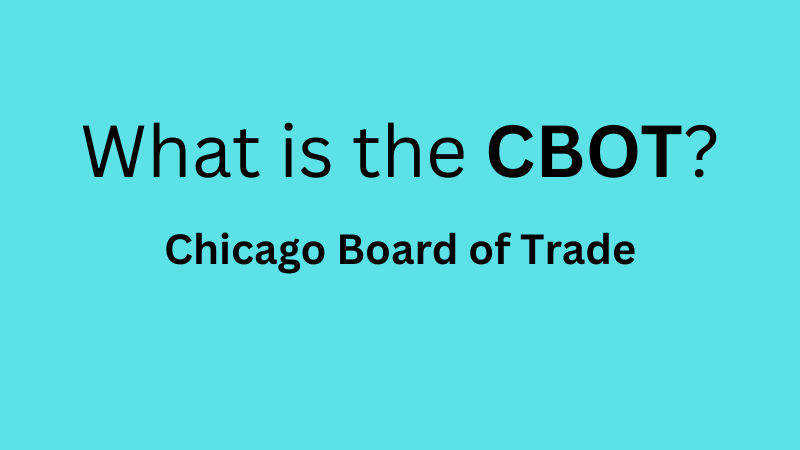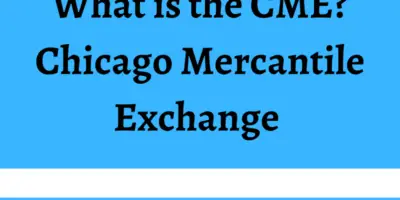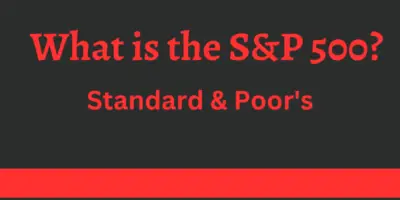What is the CBOT?

The Chicago Board of Trade (CBOT) is a commodities and futures exchange in Chicago, Illinois, United States. It was founded in 1848 and is one of the world’s oldest and largest futures exchanges. The exchange is known for its open-outcry trading pits, where traders physically gather to buy and sell futures contracts using hand signals and vocal cues. In recent years, the CBOT has also moved towards electronic trading, with most trades now conducted through computer networks.
Brief History of the CBOT
The Chicago Board of Trade (CBOT) was founded on April 3, 1848, by a group of Chicago businessmen who wanted to establish a centralized location for trading agricultural commodities. At the time, Chicago was a major hub for grain production and transportation, and the CBOT quickly became a vital institution for the region’s farmers, merchants, and speculators.
In the early years
The CBOT primarily traded in cash contracts for wheat, corn, and other grains. However, by the late 19th century, the exchange had started to develop a futures trading system, where contracts were bought and sold for delivery of goods at a future date. This allowed farmers and other commodity producers to hedge their risks and ensure a stable price for their products, while also giving speculators the opportunity to profit from price fluctuations.
Over the next century
The CBOT continued to expand its operations and product offerings. It added trading in other agricultural commodities such as soybeans, pork bellies, and cattle, as well as financial instruments such as treasury bonds, stock market indices, and foreign currencies.
In the 1970s
The CBOT introduced its first financial futures contract, based on the newly created Dow Jones Industrial Average.
In the 1990s
The CBOT began to transition from its traditional open-outcry trading pits to electronic trading platforms. This allowed traders to buy and sell contracts remotely, from anywhere in the world and greatly increased the speed and efficiency of the exchange’s operations.
In the 2000s
The CBOT merged with the Chicago Mercantile Exchange (CME) to form the CME Group, which remains one of the world’s largest and most influential futures exchanges.
What Does the CBOT Trade?
The Chicago Board of Trade (CBOT) primarily trades in futures contracts for agricultural commodities such as corn, soybeans, wheat, and oats. These contracts allow buyers and sellers to agree on a price for a certain quantity of the commodity to be delivered at a future date. This helps to reduce price volatility and manage risk for farmers, processors, and other participants in the agricultural supply chain.
In addition to agricultural commodities, the CBOT also trades futures contracts for financial instruments such as treasury bonds, stock market indices, and foreign currencies. These contracts allow investors to hedge against risks in the financial markets or speculate on price movements.
The CBOT’s product offerings have expanded over time, and the exchange now offers a wide range of futures and options contracts on various commodities and financial instruments. The exchange is also a leader in the trading of environmental products such as carbon credits, which are used to offset greenhouse gas emissions.
How Does the CBOT Work?
The Chicago Board of Trade (CBOT) is a futures exchange that operates by providing a platform for buyers and sellers to trade contracts for a wide range of commodities and financial instruments. Here’s how it works:
- Trading products: The CBOT offers futures and options contracts on various commodities such as corn, soybeans, wheat, and financial instruments such as treasury bonds, stock market indices, and foreign currencies. These contracts allow buyers and sellers to agree on a price for a certain quantity of the underlying asset to be delivered or settled at a future date.
- Trading process: Buyers and sellers can trade these contracts either electronically through the exchange’s electronic trading platform or in person at the exchange’s trading pit using open-outcry trading. In open-outcry trading, traders gather in pits on the trading floor to buy and sell contracts using hand signals and vocal cues. Trades are matched based on the price and quantity of the contracts offered by both parties.
- Clearing and settlement: Once a trade is executed, the exchange’s clearinghouse steps in to guarantee the trade’s performance and manage the risk of default. The clearinghouse becomes the buyer to the seller and the seller to the buyer, reducing counterparty risk. The exchange also settles the trade by transferring the underlying asset or cash between the parties at the agreed-upon price.
- Margin requirements: In order to trade on the CBOT, buyers, and sellers are required to post a margin, which is a deposit that serves as collateral for their positions. The margin requirement is based on the size and risk of the position, and it helps to ensure that the parties have sufficient funds to cover any potential losses.
Difference Between the CBOT and the CME
The Chicago Board of Trade (CBOT) and the Chicago Mercantile Exchange (CME) are both major futures exchanges located in Chicago, Illinois, United States. Here are some key differences between the two exchanges:
History and Legacy:
The CBOT was founded in 1848 and is one of the oldest and most established futures exchanges in the world, with a strong legacy in trading agricultural commodities. The CME, on the other hand, was founded in 1898 and has historically focused more on financial derivatives.
Products Traded
While both exchanges offer futures and options contracts on a wide range of commodities and financial instruments, the CBOT is known for its expertise in trading agricultural commodities such as corn, soybeans, and wheat, while the CME is more focused on financial derivatives such as interest rates, stock market indices, and foreign currencies.
Trading Methods
The CBOT has a long history of open-outcry trading, where traders gather in pits on the trading floor to buy and sell contracts using hand signals and vocal cues. However, in recent years the exchange has moved towards electronic trading. The CME has always been more focused on electronic trading and is known for its sophisticated trading platforms and algorithms.
Ownership and Management
The CBOT was acquired by the CME in 2007 and is now a subsidiary of the CME Group. While the two exchanges operate independently, they share some back-office functions and resources.
Becoming a Member of the CBOT
Becoming a member of the Chicago Board of Trade (CBOT) is a complex process that involves meeting certain eligibility requirements, completing an application, and paying various fees. Here are the general steps involved:
- Eligibility: The first step in becoming a member of the CBOT is to determine whether you meet the exchange’s eligibility requirements. These requirements can vary depending on the type of membership you’re seeking and may include factors such as experience, financial resources, and other qualifications.
- Application: Once you’ve determined that you’re eligible to become a member, you’ll need to complete an application form and provide various documents and information, such as your resume, financial statements, and references. You’ll also need to pay an application fee, which can be substantial.
- Background check: As part of the application process, the CBOT will conduct a background check to verify your identity and qualifications. This may include a credit check, criminal history check, and other due diligence procedures.
- Approval: If your application is approved, you’ll be notified of your membership status and required to pay additional fees, such as membership dues and trading seat fees. These fees can be significant, so it’s important to factor them into your decision to become a member.
Overall, becoming a member of the CBOT is a significant commitment that requires a significant investment of time, money, and resources. If you’re interested in pursuing membership, you may want to contact the CBOT directly for more information on the specific requirements and procedures involved.
How To Contact the Chicago Board of Trade?
The Chicago Board of Trade (CBOT) is now a subsidiary of the CME Group, and their contact information can be found on the CME Group website. Here are some ways to contact them:
- Website: The CME Group website cmegroup.com has a contact page where you can submit a message or question to the CBOT or another CME Group exchange. The website also has a live chat feature that can connect you with a representative during business hours.
- Phone: You can reach the CBOT by phone at 1-312-930-1000. This number will connect you to the CME Group’s general switchboard, and you can ask to be transferred to the CBOT if necessary.
- Email: The CME Group website has a contact form where you can submit an email inquiry to the CBOT or another exchange. You can also find specific email addresses for different departments and functions on the website.
- Mail: The CBOT’s physical address is 141 West Jackson Boulevard, Chicago, Illinois 60604. However, it’s worth noting that this is the address for the CME Group’s Chicago office, which houses several exchanges including the CBOT.


